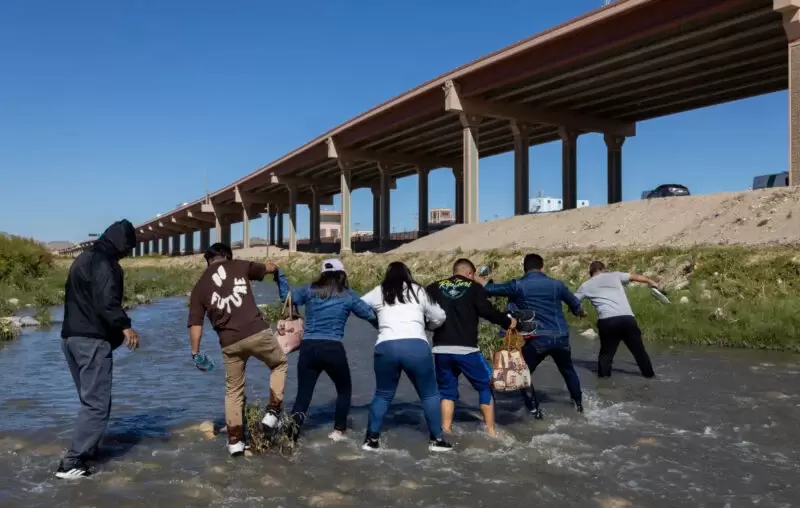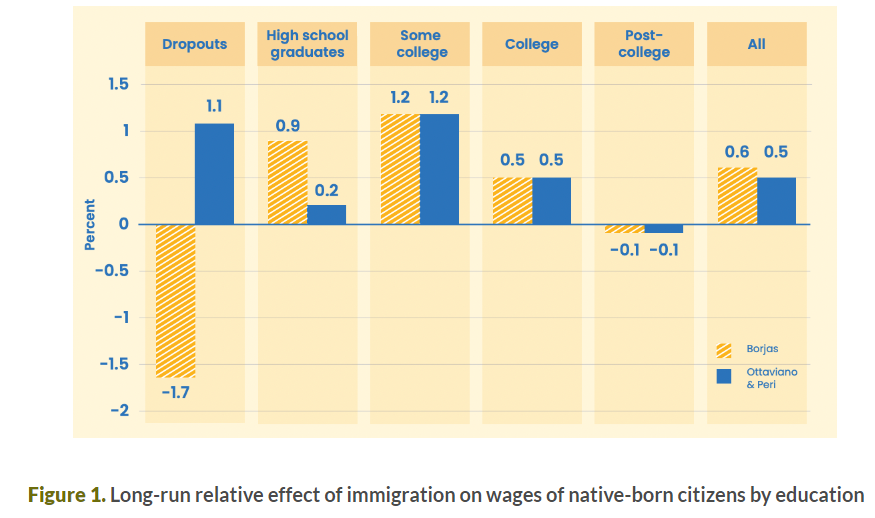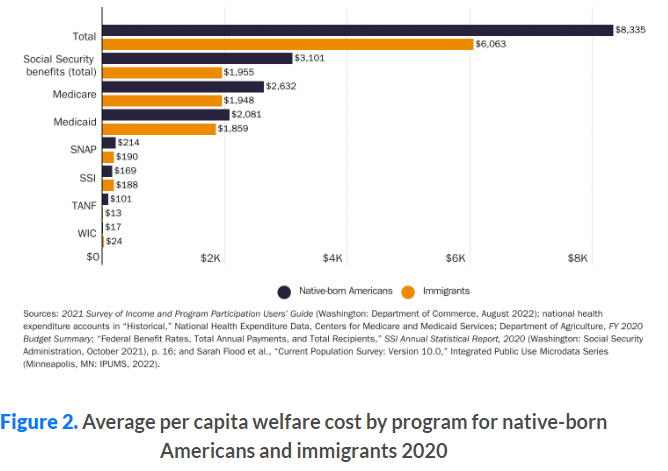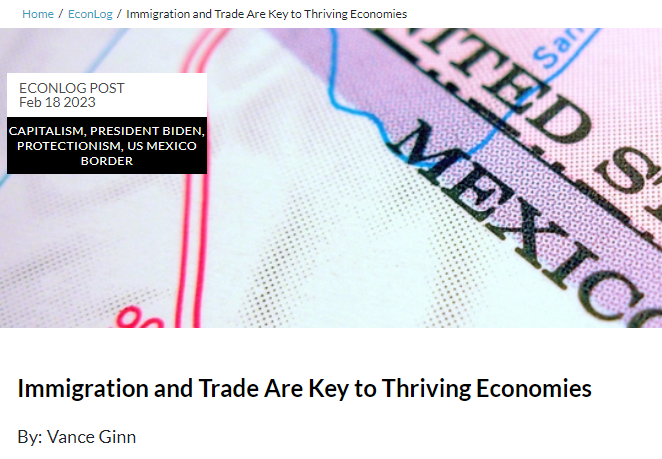|
Originally published at Kansas Policy Institute.
Recent Internal Revenue Service (IRS) data underscore a significant trend: people and income continue moving from high-tax to low-tax states. The pandemic lockdowns accelerated this movement, and even as life returns to a semblance of normalcy, the exodus continues unabated as policies matter. The IRS reports migration data between states reveal that in 2022, California topped the list of net losers in adjusted gross income (AGI), shedding $23.8 billion. Other high-tax, blue states, New York, Illinois, New Jersey, and Massachusetts, were the biggest losers, collectively losing billions in AGI. Conversely, low-tax, red states like Florida, Texas, South Carolina, Tennessee, and North Carolina emerged as the biggest net gainers, with Florida alone attracting $36 billion in AGI. According to the Wall Street Journal, the flight from blue, high-tax states far surpasses pre-pandemic levels. California’s income loss in 2022 was nearly three times that of 2019. New Jersey saw a record net income loss, largely due to fewer New Yorkers relocating across the Hudson River. Although lower than during the pandemic, New York’s AGI loss was still about 50% higher in 2022 compared to 2019. This migration pattern illustrates a clear preference for states with lower taxes, less regulation, and more business-friendly environments. The top income-gaining states share common pro-growth policies that promote economic growth, highlighting the significant impact of state policies on migration decisions as people move with their feet. Kansas: A State of Concern For Kansas, the story is one of consistent outmigration. The net loss from domestic migration in 2022 marked the 28th out of the last 30 years, with a staggering loss of over $600 million and more than $2 billion over the last five years. This represents the second-highest loss in three decades, second only to 2017 when the state imposed its highest tax increase. The average state outmigration loss in Kansas, about $76,000 per return, indicates a broad spectrum of incomes are leaving. Moreover, Kansas’ biggest gains came from higher-tax states, and its losses went to lower-tax states. Johnson County, often hailed as Kansas’s economic engine, accounted for over half of the state’s AGI loss at $357 million in 2022. This marks the fifth out of the last six years that Johnson County has experienced a net loss. Despite having about 20% of the state’s population, it has borne a disproportionate share of the AGI loss, which coincides with efforts to shift the county politically left and impose significant property tax hikes that reduce affordability. Considering data from the Kansas Policy Institute’s Green Book and the Tax Foundation, it becomes clear that Kansas is not alone in facing these challenges. However, the extent of the problem in Kansas is particularly alarming compared to other states. The IRS data indicate that while many states have rebounded or stabilized post-pandemic, Kansas continues to struggle with significant outmigration. Economic and Policy Implications for Kansas The significant outmigration from Kansas has several implications:
Kansas’s Path to Prosperity In response to these challenges, Kansas must adopt a comprehensive approach that includes responsible budgeting, tax relief, and the removal of barriers to work and education. Here are some key policy recommendations:
Addressing Migration Trends The migration trends underscore the importance of adopting free-market, pro-growth policies prioritizing economic freedom and personal responsibility. Kansas can learn from states that have successfully attracted residents and income by implementing policies that reduce the size of government, lower taxes, and eliminate burdensome regulations. The continued outmigration from Kansas highlights the urgent need for policy reforms that can reverse this trend. By learning from the successes of states that have managed to attract people and income, Kansas can chart a path toward a more prosperous future. Addressing the underlying issues driving residents away is crucial to ensuring the state’s long-term economic stability and growth.
0 Comments
Improve Immigration by Strengthening American Values with Dr. Veronique de Rugy| LPP ep. 1026/25/2024 Join me for Episode 102 of the Let People Prosper Show to hear a deep discussion with the fantastic Dr. Veronique (Vero) de Rugy, the George Gibbs Chair in Political Economy and Senior Research Fellow at the Mercatus Center at George Mason University, who migrated from France to America.
We Explore: -How the entrepreneurial spirit contributes to immigration between countries. - What the differences are between national conservatism and classical liberalism. - Which policies would improve the economic and fiscal picture. Like, subscribe, and share the Let People Prosper Show, and visit vanceginn.substack.com and vanceginn.com for more insights from me, my research, and ways to invite me on your show, give a speech, and more. Originally published at American Institute for Economic Research.
The Economist recently compared Joe Biden’s and Donald Trump’s economic records, concluding Biden wins so far. While the article raises valid points, it excludes key details that make the findings questionable. Ten months from now, there’s a high likelihood Biden and Trump could go head-to-head again for the presidency, especially after the results from the Iowa caucus. But voters should be informed about the effects of their policies on key issues like immigration, inflation, and wages. Starting with a divisive bang, let’s look at each leader’s track record concerning immigration. The Economist correctly noted that apprehensions along the southern border were much lower under Trump. They increased by the most in 12 years during the economic expansion of 2019, decreased early in the COVID-19 pandemic when people could be turned away for public health concerns, and rose again during the lockdowns. While some may see apprehensions rising between Trump and Biden as a loss for Biden, I see it as a loss for both. This metric is somewhat unreliable, given one person can be caught and counted multiple times, and those caught are a subset of total migrants. The truth is immigration is good for the economy, but government failures create unnecessarily complex barriers against legal immigration, contributing to the humanitarian crisis along the Mexico border today. Neither President has pushed for what’s needed (market-based immigration reforms) both lose. Inflation is another hot topic, especially for Biden. The Economist hands the win to Trump, as inflation was far lower during his presidency. But can we give him the credit? Remember, Trump pressured the Federal Reserve to reduce its interest rate target and expand its balance sheet, which was inflationary. His deficit spending skyrocketed during the lockdowns and was mostly monetized by the Federal Reserve, contributing to what was always going to be persistent inflation. Biden made this deficit spending and resulting inflation much worse. Add in the Fed’s many questionable decisions, such as doubling its assets, cutting and maintaining a zero interest rate target for too long, and focusing too much on woke nonsense, and we can see how this was always going to be persistent inflation. But even the Fed’s latest projections indicate it won’t hit its average inflation target of two percent until at least 2026. Likely, it will cut the current federal funds rate target range of 5.25 percent to 5.5 percent three times this year, keep a bloated balance sheet to finance massive budget deficits, and run record losses. If so, this inflation projection is too rosy. Some of Trump’s policies helped stabilize prices, including his tax and regulation reductions. But he still allowed egregious spending. Biden has doubled down on red ink that has contributed to the recent 40-year-high inflation rate. While inflation has been moderating recently under Biden, Trump gets the win. Of course, neither Presidents nor Congress control inflation, as that job is the Fed’s, but its fiscal policies influence it. When it comes to inflation-adjusted wages, The Economist grants a tie. Let’s consider real average weekly earnings that include hourly earnings and hours worked per week, adjusted for the chained consumer price index, which adjusts for the substitution bias and has been used for indexing federal tax brackets since the Tax Cuts and Jobs Act of 2017. Trump’s era witnessed a robust upward trajectory of real earnings, with considerable gains by lower-income earners, thereby reducing income inequality. We must acknowledge a real wage spike in 2020 during Trump’s lockdowns, marked by the loss of 22 million jobs and various challenges. To maintain a fair analysis, I disregard this spike. A year later, real wages demonstrated a decline under Biden. Extending the timeframe to two years later, real wages remain relatively flat to slightly increased. To provide a contextual understanding, when we consider the trend under Trump, excluding the 2020 spike, real wages for all private workers or production and nonsupervisory workers fall below those observed during Biden. It’s worth noting, however, that these wages have been higher since 2019, albeit nearly stagnant for all private workers. Given real earnings, I agree with The Economist that Trump and Biden are tied. While much more can be said for each President’s policies, continuing to add context when making assessments is crucial. I give Trump a nuanced “win” overall because his policies supported more flourishing during his first three years until the terrible mistake of the COVID lockdowns, with its huge, long-term costs. I should note that I made a strong case inside the White House for no shutdowns and less government spending but, alas, my efforts, and those by others, lost to Fauci, Birx, and Trump. Given the improved purchasing power during his presidency, Trump receives better poll ratings than Biden after three years of their presidencies. But this win doesn’t mean that Trump’s record is best regarding these issues, protectionism, and more. Let’s hope free-market capitalism, the best path to let people prosper, is on display this November, no matter who is on the ballot. LPP Bonus Episode | Why Tariffs, Immigration & Antitrust Laws can be HARMFUL w "The Immigration Guy"9/6/2023 In this bonus episode, we discuss: 1) How immigration helps the U.S. economy and the truth behind common immigration myths, such as fear that immigrants "steal jobs," 2) Why the tariffs against China didn't work, and the tyranny of excessive government spending; and 3) Dangers of antitrust laws, and the importance of letting markets work. Be sure to check out and subscribe to “The Immigration Guy” podcast.
You can watch this episode and others along with my Let People Prosper Show on YouTube or listen to it on Apple Podcast, Spotify, Google Podcast, or Anchor. Please share, subscribe, like, and leave a 5-star rating! For show notes, thoughtful insights, media interviews, speeches, blog posts, research, and more, check out my website (www.vanceginn.com) and please subscribe to my newsletter (www.vanceginn.substack.com), share this post, and leave a comment. Immigrants founded America, yet the path for immigrants to become U.S. citizens is harder than ever, and getting worse. Florida’s new law aimed to identify undocumented immigrants and prosecute any who have helped them enter the country will strain the state’s businesses, hospitals, and law enforcement. Meanwhile, the U.S. citizenship test, one of the final steps to becoming an official American, is undergoing changes that could make it more difficult for non-native English speakers to pass. These types of barriers to legal immigration, including border walls and complicated visa applications, hinder economic prosperity for immigrants and the native-born population. But America keeps discouraging immigration with more red tape because people fail to understand the economic impacts of immigration due to fear-mongering and false messaging. Thankfully, facts and data tell the true story that the country is overall helped by immigrants. Perhaps you’ve heard the common concern that immigrants “steal jobs” and “lower wages.” On the surface, it seems intuitive that immigrants increasing the supply of workers would yield these effects. But that’s incomplete as there is no one labor market but many labor markets depending on skills, experiences, and other criteria. Alex Nowrasteh, vice president for economic and social policy studies with the Cato Institute and author of Wretched Refuse?, states, “To substitute natives, immigrants would have to be similar. But the competition is not even, so that doesn’t apply. Immigrants tend to have either high or low levels of education, while Americans are in the middle. There are also language differences. For immigrants who do not yet know English, they will not be selected for jobs that require verbal communication with the public.” Immigrants are more likely to find themselves competing for jobs against other immigrants instead of native-born workers for this reason. When immigrants move to the United States, the wages of native-born workers actually tend to increase. This is because immigrants contribute to increased demand by purchasing goods and services. As a result, businesses expand, leading to higher labor demand and wage growth for native workers. Studies have shown that immigrants are twice as likely as native-born Americans to start businesses, ranging from small enterprises to large-scale ventures. This entrepreneurial spirit increases labor demand for immigrants and contributes to greater opportunities for everyone else. As Nowrasteh puts it, “Every argument against immigration could be an argument against native-born Americans having babies.” When a child is born, that’s a new future worker who will grow up, enter the labor market, and could “steal” someone’s wages. Thankfully, it doesn’t work like that, and most people recognize that having children is adding to the labor market in the long term and not posing a threat to someone else’s job or wages. Another fear often promoted to discourage easier immigration is that immigrants cost us more tax dollars. Again, it sounds believable, but studies show differently. Not only are new immigrants barred from using safety-net programs in most instances, but also, the average immigrant consumes 27% less welfare than the average native-born American. Making immigrants the scapegoat when assessing the cost of government programs distracts from the much more prominent concern of how many U.S. citizens depend on these programs, noting the need for safety net reforms for everyone. Regarding taxes, immigrants pay more on average and generate more federal tax revenue. Due to the varying state tax codes, immigrants may or may not pay more taxes than citizens depending on which state they live. Moreover, most immigrants enter the country in their early twenties and immediately join the workforce, making them fiscally positive contributors who don’t rely on education subsidies.
Recognizing how immigration is often misunderstood as a threat when it is actually a huge benefit is critical if Americans hope to cultivate a prosperous economy where native-born and legal migrant workers can thrive. Restricting immigration limits the ability to work with individuals who possess the skills and talents that could enhance productivity and innovation in the long run, and the whole country suffers as a result. State and federal resources that discourage immigration would be better invested by reforming the path to immigration so that individuals who want to contribute to American society can do so with relative ease. While reasonable exclusions for national security threats may be necessary, beyond that, discouraging immigration harms the American economy. Physical barriers like the Texas-Mexico border wall are costly to build, maintain, and patrol, are ineffective at deterring people from entering the country, and represent the illogical fear of immigration leading to worse outcomes. Instead, reforming the visa system with a market-based approach to expand legal immigration opportunities would alleviate border chaos, reduce the black market, and enhance economic growth. New anti-immigration laws like the one in Florida will move America backward. Originally published by Econlib. Today, I'm honored to be joined by Alex Nowrasteh, Director of Immigration Studies at Cato Institute's Center for Global Liberty and Prosperity. We discuss: 1) Immigration myths, including "immigrants steal jobs," and why that isn't true; 2) What data reveal about where today's immigrants are coming from, how their life improves upon moving to America, and how America is improved by immigrants, and 3) Need for immigration reform, why one day we'll tear down the Texas border wall, and more. You can watch this interview on YouTube or listen to it on Apple Podcast, Spotify, Google Podcast, or Anchor. Please share on social media, subscribe to your favorite platform and my newsletter, like it and leave a 5-star rating.
President Biden recently visited the humanitarian crisis along the U.S.-Mexico border but mostly used it as a political stunt to offer more failed policies and chastise Republicans. Republicans have also had years to solve immigration issues, but the situation continues. Meanwhile, Biden and former President Trump have similar protectionist trade policies, which have come at a cost to Americans.
Given the gains from immigration and trade in a globally connected economy, many on the left and the right overlook how government failures of a broken visa system and costly big-government are the source of these problems. And this oversight leads to many of their big-government solutions that aren’t rooted in sound economics but rather winning votes. Immigration and trade overlap in many ways as they are exchanges with people across international borders. Given the rule of law and private property rights are essential in our republic, there are roles for government to enforce the rules of the game but otherwise politicians should address bad policies in the U.S. before trying to blame tangential problems on other countries or “market failures.” For instance, have you ever heard that “immigrants and trade steal jobs”? It’s a myth. The notion that immigrants “steal jobs” supposes that adding more people and different kinds of knowledge and innovation to the economic pie somehow prohibits the native-born population from prospering. Simply put, the aversion to immigrants joining the American workforce is rooted in fear of competition. Moreover, much of the skepticism fueling fear of more working immigrants tends to also be directed at international trade. But the gains to be acquired from immigration and trade outweigh the suspected costs. We would be wise to let markets work within the rule of law instead of imposing arbitrary restrictions and growing government. Working immigrants do not steal jobs. But, as economist Ben Powell recently noted in my conversation with him, they do change the mix of jobs as they expand the capacity of the economy with more workers. Similarly, when young people graduate college and enter the labor market each year, they don’t “steal jobs” but often accept the lower-skilled positions while increasing productivity. These groups support increased competition, fuel the creation of new jobs, and permit the native-born population to work in positions in which they’re more productive. They also increase demand for goods and services provided by lower-skilled workers. So, immigrants and new graduates alike can increase net jobs. When I hire a contractor to install my ceiling fan, I don’t view it as them stealing my job because someone else is better at it. Even though I pay for the service, it’s a trade that ultimately benefits me or I wouldn’t do it, as not learning how to install the fan gives me more time to do things which I enjoy. The contractor and I mutually benefit, just like with all exchanges with people whether in the same community, same state, same country, or another country. Barriers to immigration and trade, such as visa limitations, border walls, tariffs, and quotas, are barriers to human cooperation enforced by politicians with limited knowledge. A more productive path forward would be pursuing immigration reform that improves the visa system, making it easier for immigrants to come legally. Border walls, such as the one in Texas, are a scapegoat and far cry from addressing the real issues needing reform. Similar to the fear of immigration, proponents of trade protectionism often fail to understand that the exchange is as economically simple as it is non-threatening. Whether a Texan is trading with a New Yorker or someone from China, it’s individuals, not places or entities, trading for mutual benefit. A greater exchange of goods and services through trade promotes competition as the expanded pool of resources for consumers encourages producers to innovate to stay competitive or risk closing. International trade doesn’t steal U.S. profits any more than immigrants steal jobs. But, like immigration, it allows people to focus on producing the goods they have a comparative advantage instead of being pressured to supply everything for themselves. The goal should be to reduce costs of doing business so there are abundant opportunities for American workers and businesses to flourish by cutting government spending, taxes, and regulations. Restricting trade and immigration ultimately restricts the prosperity supported by free-market capitalism by keeping out an influx of knowledge, skills, and goods and services that made the American melting pot so great for so long. Anti-trade and anti-immigration are anti-growth. Free markets are really free people. We ought to find free-market solutions to advance freedom and opportunity rather than impose costly barriers that hinder them. As economist Peter Boettke recently in my conversation with him: when ordinary people are given elbow room to grow, economies thrive and people can prosper. Originally published at Econlib. The Economics of Immigration is a compilation of essays by top economists and researchers and edited by economist Ben Powell. I learned much about immigration from this book and it had me questioning my views on the issue along the way.
The book is separated into two parts: Social Science and Public Policy. The first part looks at what the social science research shows regarding the economic effects, fiscal impacts, assimilation, and an international comparison of employment visas when examining immigration. The second part has three distinct views on the appropriate policy to deal with immigration: market-based approach that allows prices of visas allocate the number of immigrants, an assimilation-concerned approach that would substantially cut the levels of legal immigration, and an open-borders approach that would let people migrate as they please with minimum (or no) government influence. Immigration is a major issue that continues to dominate presidential elections and state politics, particularly in Texas. While there is still much that we don't know, and the book highlights the need for more research, there is clear evidence that increasing human capital (immigrants) contributes to greater economic growth per person while most findings show little to no positive or negative net fiscal effects. Instead of allowing the politics to overwhelm the debate with a lack of fully understanding the economics behind it, I recommend this book to have a better idea before determining your view on what should be done. I tend to prefer the market-based approach that keeps the rule of law as an essential part of a well-functioning economy and allows prices instead of technocrats an opportunity to efficiently allocate the number of visas for all skill levels. In addition, government assistance should be as limited as possible so that welfare programs will be reduced to only the most needy for native-born and foreign-born individuals, which will diminish any negative fiscal effects from immigration and boost the positive economic growth effects as taxes and fees can remain lower than otherwise. Over time, we need more people here as baby boomers retire and as the U.S. expands the need for more entrepreneurs. Expanded legal immigration seems to be the way to go, especially after reading the evidence in this book. https://www.goodreads.com/review/show/1417533562?book_show_action=true&from_review_page=1 |
Vance Ginn, Ph.D.
|








 RSS Feed
RSS Feed